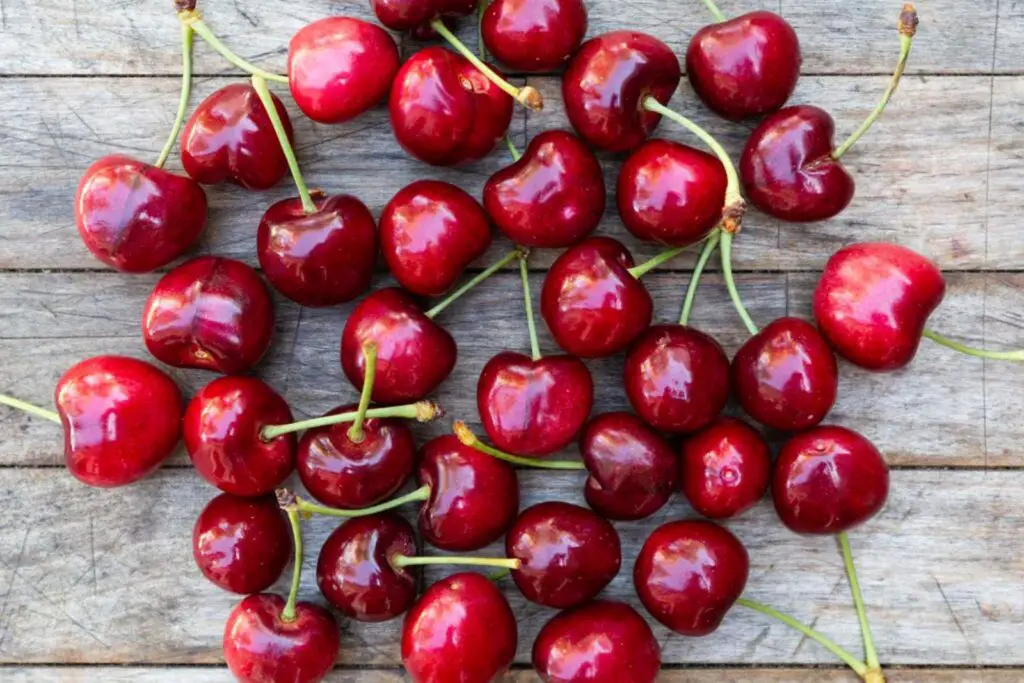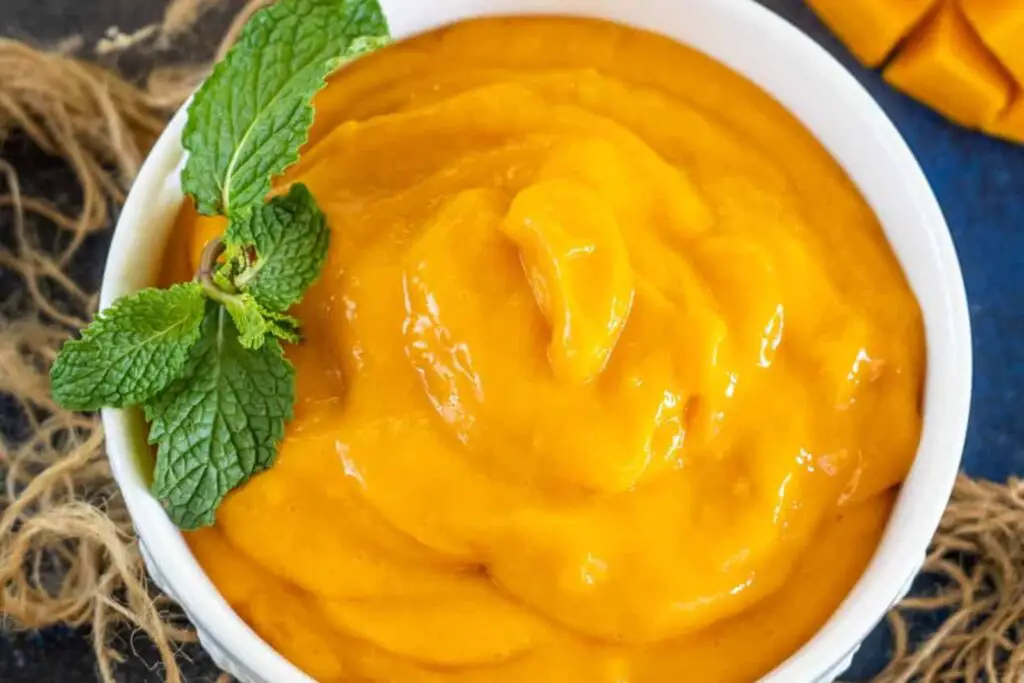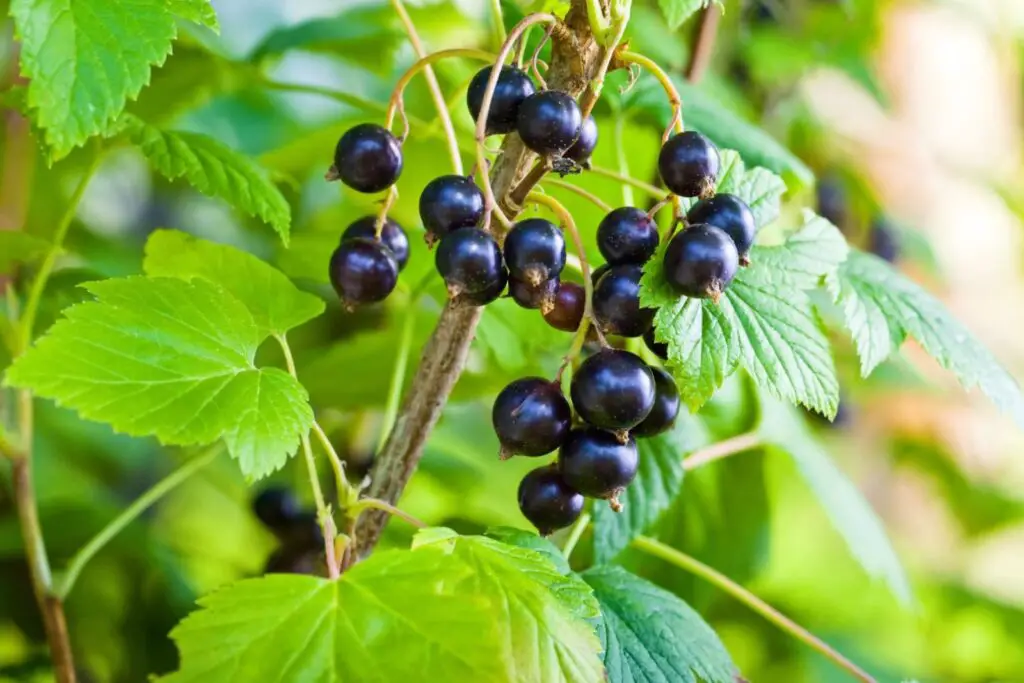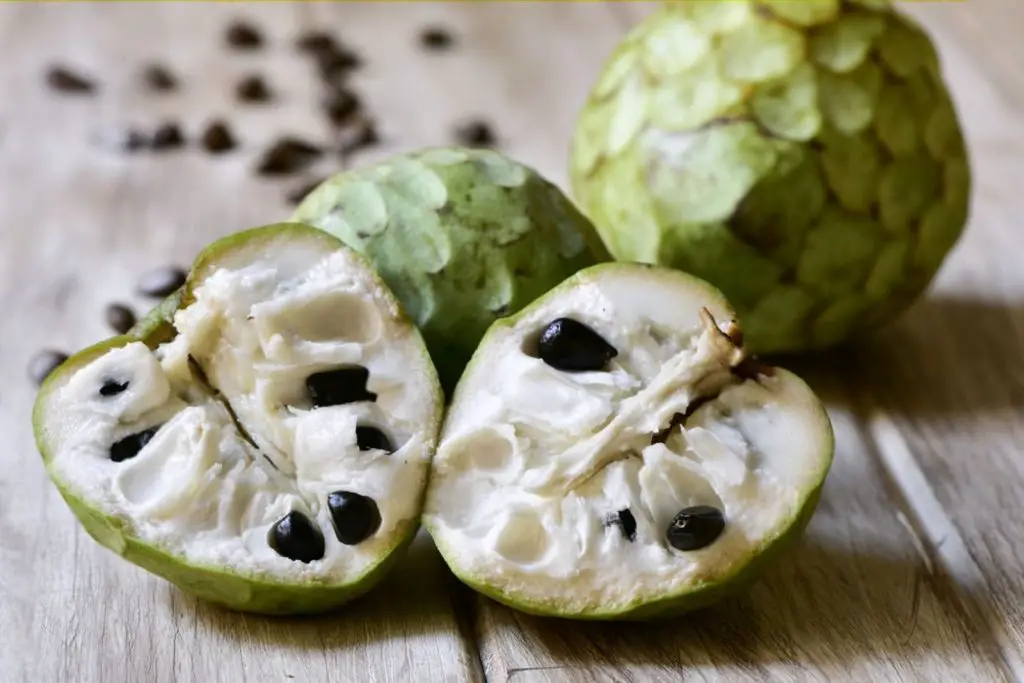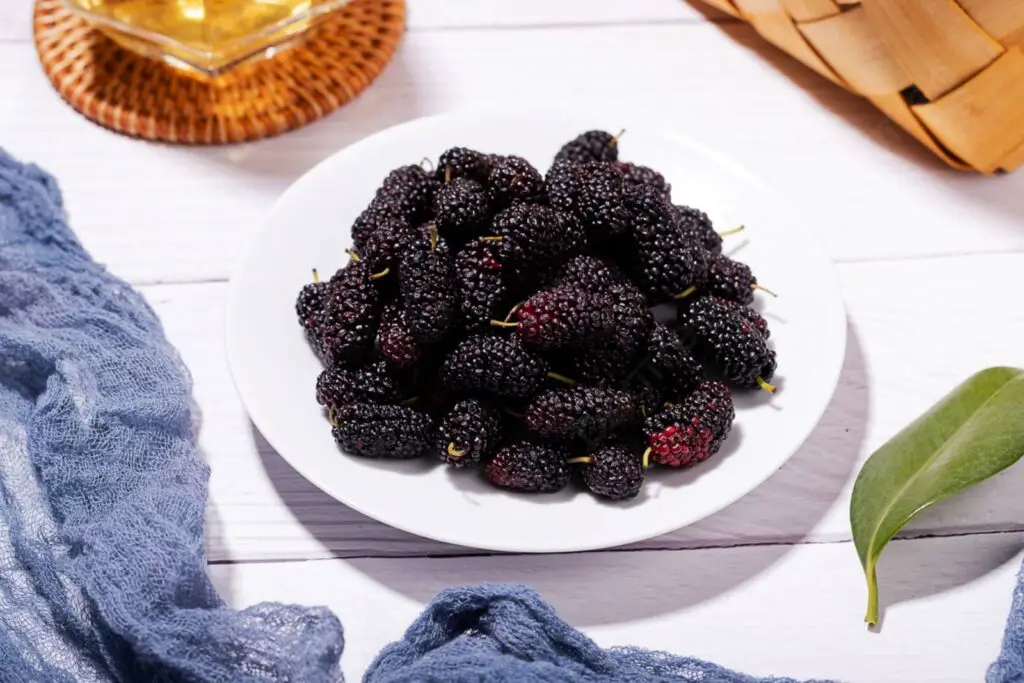
Cantaloupe, also known as muskmelon, is a refreshing and juicy fruit that is beloved for its sweet, aromatic flavor. With its vibrant orange flesh and unique fragrance, cantaloupe is a delightful addition to fruit salads, smoothies, and desserts. However, if you find yourself with an abundance of ripe cantaloupes or simply want to enjoy this delicious fruit throughout the year, freezing it is a great option. Freezing cantaloupe preserves its taste and texture, allowing you to savor its summery goodness even during the colder months. In this guide, we will explore the best methods for freezing cantaloupe to ensure that it maintains its fresh flavor and remains a delightful treat whenever you crave it.
Here are the simple steps for freezing cantaloupe:
- Step 1: Wash and dry the cantaloupe
- Step 2: Cut the cantaloupe in half and scoop out the seed
- Step 3: Cut the cantaloupe into bite-sized pieces or slices
- Step 4: Place the pieces/ slices onto a baking sheet
- Step 5: Put the baking sheet with the cantaloupe into the freezer
- Step 6: Freeze the cantaloupe for 1-2 hours or until frozen solid
- Step 7: Transfer the frozen cantaloupe to a freezer-safe container
- Step 8: Label the container or bag with the date and contents
- Step 9: Put the container or bag of frozen cantaloupe back into the freezer
Step 1: Wash and dry the cantaloupe
The first step in freezing cantaloupe is to wash and dry it thoroughly. This is important because it helps to remove any dirt or bacteria that may be present on the surface of the fruit. It also ensures that the fruit is clean and ready to be cut into pieces or slices.
To wash the cantaloupe, rinse it under cool running water and use your hands or a soft brush to gently scrub the surface of the fruit. Be sure to remove any dirt or debris that may be stuck to the skin. After washing, pat the cantaloupe dry with a clean towel or paper towel to remove any excess moisture. This step helps to prevent ice crystals from forming on the fruit during the freezing process.
Step 2: Cut the cantaloupe in half and scoop out the seed
The second step in freezing cantaloupe is to cut it in half and scoop out the seeds. Cantaloupes have a fibrous center filled with seeds that are not edible and can be bitter in taste. Removing them is important to ensure that the frozen cantaloupe tastes sweet and delicious.
To cut the cantaloupe in half, place it on a cutting board with the stem end facing up. Use a sharp knife to carefully cut the fruit in half from top to bottom. Once the cantaloupe is cut in half, use a spoon to scoop out the seeds and discard them. If you plan to eat the cantaloupe immediately, you can scoop out the flesh of the fruit using a melon baller or cut it into slices.
Can I freeze whole cantaloupes instead of cutting them into pieces?
While it is technically possible to freeze whole cantaloupes, it is not recommended as the texture and flavor of the cantaloupe may be negatively affected. Freezing the whole cantaloupe can cause the fruit to become mushy, and it may also develop freezer burn. It is best to cut the cantaloupe into bite-sized pieces or slices before freezing them. This will help the fruit freeze evenly and make it easier to thaw and use in recipes.
Step 3: Cut the cantaloupe into bite-sized pieces or slices
The third step in freezing cantaloupe is to cut the fruit into bite-sized pieces or slices. This step is important because it helps to ensure that the cantaloupe freezes evenly and quickly, preserving its flavor and texture.
To cut the cantaloupe into pieces or slices, use a sharp knife to cut the fruit into the desired size. You can cut the cantaloupe into small bite-sized pieces or larger slices depending on your preference. Be sure to remove the skin before cutting the fruit if you prefer not to eat it.
Step 4: Place the pieces/ slices onto a baking sheet
The fourth step in freezing cantaloupe is to place the cut pieces or slices onto a baking sheet lined with parchment paper. This step is important because it helps to prevent the cantaloupe from sticking together during the freezing process.
Using a baking sheet with parchment paper provides a flat surface that will allow each piece or slice of cantaloupe to freeze individually. If you do not have parchment paper, you can also use wax paper or plastic wrap.
Be sure to spread the pieces or slices out evenly on the baking sheet so that they are not touching each other. This will ensure that the cantaloupe pieces freeze separately, making it easier to remove them from the baking sheet and transfer them to a freezer-safe container or bag.
Step 5: Put the baking sheet with the cantaloupe into the freezer
The fifth step in freezing cantaloupe is to put the baking sheet with the cantaloupe into the freezer. This step is important because it will freeze the cantaloupe pieces or slices quickly and effectively.
Place the baking sheet with the cantaloupe into the freezer and make sure it is placed on a flat surface to prevent spillage. It is recommended to freeze the cantaloupe for 1-2 hours or until frozen solid.
Freezing the cantaloupe quickly helps to maintain its flavor, texture, and nutrients. If the cantaloupe is frozen slowly, it can cause ice crystals to form on the fruit, resulting in a mushy texture when thawed.
Step 6: Freeze the cantaloupe for 1-2 hours or until frozen solid
The sixth step in freezing cantaloupe is to freeze it for 1-2 hours or until it is frozen solid. This step is important because it ensures that the cantaloupe is completely frozen, making it easier to store and use later on.
The exact time needed to freeze the cantaloupe will depend on the thickness of the pieces or slices and the temperature of your freezer. It is recommended to freeze the cantaloupe for at least 1-2 hours or until it is completely frozen.
To check if the cantaloupe is frozen, remove a piece or slice from the baking sheet and test its firmness. If it is frozen solid, it is ready to be transferred to a freezer-safe container or bag for long-term storage. If it is not completely frozen, return it to the freezer for a bit longer.
Step 7: Transfer the frozen cantaloupe to a freezer-safe container
The seventh step in freezing cantaloupe is to transfer the frozen cantaloupe pieces or slices to a freezer-safe container or bag. This step is important because it will help to protect the frozen cantaloupe from freezer burn and keep it fresh for long-term storage.
To transfer the frozen cantaloupe, carefully remove the parchment paper from the baking sheet and place the frozen pieces or slices into a freezer-safe container or bag. You can use a plastic freezer bag or airtight container that is labeled with the date and contents.
It’s important to remove as much air as possible from the container or bag before sealing it to prevent freezer burn. You can do this by using a vacuum sealer or by pressing out as much air as possible before sealing.
Step 8: Label the container or bag with the date and contents
The eighth step in freezing cantaloupe is to label the container or bag with the date and contents. This step is important because it helps you keep track of how long the cantaloupe has been frozen and what it is.
By labeling the container or bag, you can easily identify the contents and the date it was frozen. This will help you know when to use the cantaloupe before it loses its quality and flavor.
Make sure to use a permanent marker or a label sticker to write the date and contents of the container or bag. It is also helpful to write the quantity of the cantaloupe in the container or bag to avoid any confusion when using it later on.
By labeling the container or bag, you can ensure that you are using the frozen cantaloupe in a timely manner and avoiding any wastage.
Step 9: Put the container or bag of frozen cantaloupe back into the freezer
The final step in freezing cantaloupe is to put the container or bag of frozen cantaloupe back into the freezer. This will ensure that the frozen cantaloupe remains at a constant temperature of 0°F (-18°C) or below to maintain its quality and freshness.
Before storing the frozen cantaloupe in the freezer, make sure that the container or bag is sealed tightly to prevent any air from entering. Exposure to air can cause freezer burn, which can affect the taste and texture of the cantaloupe.
It’s also important to store the frozen cantaloupe in a location where it can be easily accessed but not in the door of the freezer, as this area is subject to temperature fluctuations each time the door is opened. Make sure to label the container or bag with the date and contents to keep track of how long it has been frozen.
Other related questions
Can fresh cantaloupe be frozen?
Yes, fresh cantaloupe can be frozen. Freezing cantaloupe is a great way to preserve it for later use, especially if you have excess cantaloupe that you cannot consume before it goes bad. When freezing fresh cantaloupe, it’s important to follow the methods mentioned above to ensure proper freezing and storing of the cantaloupe. It is important to note that the texture of the cantaloupe may change slightly after it is frozen, but it will still retain most of its nutritional value and flavor.
How long does cut cantaloupe last in the freezer?
Cut cantaloupe can last in the freezer for up to 3-6 months, depending on how it was prepared and stored. To ensure that the cantaloupe stays fresh and maintains its quality, it’s important to store it in a freezer-safe container or bag that is sealed tightly to prevent any air from entering. Label the container or bag with the date and contents, and store it in a location in the freezer where it can be easily accessed but not in the door, as this area is subject to temperature fluctuations each time the door is opened.
When you’re ready to use the frozen cantaloupe, simply thaw it in the refrigerator for a few hours before consuming. It’s important to note that the texture of the cantaloupe may change slightly after it’s frozen, but it will still retain most of its nutritional value and flavor. If the cantaloupe has any off flavors or odors when thawed, it’s best to discard it.
How to defrost cantaloupe?
Defrosting cantaloupe is a simple process that can be done in the refrigerator. Here are the steps:
- Remove the frozen cantaloupe from the freezer and place it in a bowl or container.
- Cover the bowl or container with plastic wrap or a lid to prevent any moisture from escaping.
- Place the bowl or container in the refrigerator to thaw. It’s best to allow several hours for the cantaloupe to thaw completely. Depending on the amount of cantaloupe, it may take several hours or overnight to thaw.
- Once the cantaloupe is thawed, it may release some excess liquid. Drain any excess liquid before consuming.
- Thawed cantaloupe can be consumed as is, or used in recipes like smoothies or fruit salads.
It’s important to avoid thawing the cantaloupe at room temperature or in the microwave, as this can cause the cantaloupe to become mushy and lose its texture. Thawing in the refrigerator will help maintain the texture and flavor of the cantaloupe.
Is it safe to refreeze cantaloupe after it has been thawed?
It is not recommended to refreeze cantaloupe once it has been thawed. When cantaloupe is frozen, the water inside the cells expands, causing the cell walls to break down. When the cantaloupe is thawed, the cell walls remain broken, causing the fruit to lose its texture and quality. Additionally, when the cantaloupe is thawed, bacteria can begin to grow, which can lead to foodborne illness if the fruit is refrozen and thawed again. Therefore, it is best to only thaw the amount of frozen cantaloupe that you plan to use and not refreeze any leftovers.
Does frozen cantaloupe taste good?
The taste of frozen cantaloupe may differ slightly from fresh cantaloupe, as the freezing process can affect the texture and flavor. However, many people still find frozen cantaloupe to be a tasty and refreshing snack or an addition to recipes like smoothies or fruit salads.
It’s important to note that the texture of the cantaloupe may change after being frozen and thawed, becoming slightly softer or mushier. However, the nutritional value of the cantaloupe remains largely intact, and freezing can be a great way to preserve cantaloupe for later use.
Overall, the taste of frozen cantaloupe can be subjective, but many people still enjoy it as a frozen treat or ingredient in recipes.
Does cantaloupe get mushy when frozen?
Yes, cantaloupe can become slightly mushy when frozen and thawed. Freezing can cause the water inside the cells of the cantaloupe to expand, which can lead to cell damage and a change in texture.
When cantaloupe is frozen, it will lose some of its crispness and become softer. When it thaws, it may release some excess liquid, and the texture may become even softer or slightly mushy.
However, despite the changes in texture, frozen cantaloupe can still be used in smoothies, fruit salads, or other recipes where the texture may not be as important. Additionally, freezing cantaloupe is a great way to preserve it for later use and can be a convenient way to have cantaloupe on hand when it is out of season.
What is the best way to preserve cantaloupe?
The best way to preserve cantaloupe is to store it properly to help slow down the ripening process and prevent it from spoiling. Here are some tips for preserving cantaloupe:
Choose ripe, uncut cantaloupes:
When selecting a cantaloupe, choose one that is firm and heavy for its size, with a smooth surface and no soft spots or bruises. It’s best to buy uncut cantaloupes that are not yet fully ripe.
Store in the refrigerator:
Cut cantaloupe should be stored in the refrigerator at a temperature between 32 and 40°F (0-4°C). Store the cut side down on a plate or container, cover it with plastic wrap, and place it in the refrigerator. Whole uncut cantaloupes can be stored on the countertop at room temperature until they are fully ripe and then transferred to the refrigerator.
Use within a few days:
Cut cantaloupe should be consumed within a few days to ensure freshness and prevent spoilage.
Freeze for long-term storage:
If you have a large amount of cantaloupe and want to store it for a longer period, you can freeze it. Remember to follow the steps mentioned in this article to get the optimum quality of frozen cantaloupe.
By following these tips, you can help preserve the freshness and flavor of your cantaloupe for as long as possible.
How can I use frozen cantaloupe in recipes?
Frozen cantaloupe can be used in a variety of recipes, such as smoothies, sorbets, and fruit salads. You can also use frozen cantaloupe as a topping for yogurt or oatmeal. To use frozen cantaloupe in smoothies or sorbets, simply blend the frozen pieces with your favorite liquid and sweetener until smooth. For fruit salads or toppings, thaw the cantaloupe in the refrigerator overnight or at room temperature for a few hours before using.
How can I tell if my frozen cantaloupe has gone bad?
There are a few signs to look for to determine if your frozen cantaloupe has gone bad.
First, check the appearance. If the frozen cantaloupe appears discolored, has freezer burn or ice crystals, or has a slimy texture, it may have gone bad.
Next, smell the cantaloupe. If it has a sour, rancid, or off odor, it may have spoiled.
Lastly, taste a small piece of the cantaloupe. If it tastes off or has a strange texture, it may have gone bad.
Can I freeze cantaloupe that is not fully ripe?
It’s best to freeze fully ripe cantaloupe for optimal flavor and texture. Cantaloupe that is not fully ripe may not have the same sweetness and may become even less flavorful after freezing. However, if you have an unripe cantaloupe that you would like to freeze, you can still do so. Just be aware that the texture and taste may not be as desirable as with fully ripe cantaloupe. To freeze unripe cantaloupe, simply follow the same steps for freezing as you would with ripe cantaloupe.

